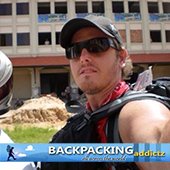Pro -hikers and -backpackers need not read this section, so I dedicate this to the noobs, students and young amateurs as myself in this kind of travel. Hiking is fun and filled with adventure, but the total opposite while uncomfortable with the imperfect ensemble. Pros know the special gear, I know the basics that have personally made my hiking experiences in volcanic craters and jungles a piece of happy pie.
1. Moisturizing sunblock
The skin is the largest organ in the body…blah blah…you’ve heard that story. Even when the sun isn’t directly overhead, sunblock is vital. Opt for a moisturizing sunblock to apply all over the body. Chemicals in sunblock can be horrible, so look for Titanium dioxide and zinc oxide that reflects sunlight away from the skin. In profuse, extended sweating (as will happen on a hike) requires a high SPF, at least SPF 30, broad spectrum sun protection. Key to understanding SPF as well is how long will you be outdoors. SPF 30 gives you about 30 minutes under intense sunlight until it wears off, or 60 minutes for SPF 60.
2. Cap
A light cotton cap will do on a sunny day, but go woollen for cooler places. Keep your head gear on because the average person loses plenty of fluids from your crown as well by heavy sweating.
3. Eye Gear
Shades can guard the eyes from the harsh blaze of the sun or snow. Besides, like a jacket, a pair of eye rigs will also protect from figs and other harsh vegetation slapping onto your face as you pass, as I’ve known one too many times. There are plenty of durable sports shades that can work in any condition, so opt for those.
4. Layered Clothes
Layering is key in moderating the body to temperature changes. In places where the temperature differences during night and day are stark, layering is most convenient. Start with a tight inner wear, top and bottom, that don’t absorb sweat. Then layer with a warm and comfortable shirt, and then an outer jacket. Strip down during the day, and layer up at night when temperatures fall, gradually adding the layers to safely adjust the body.
5. Scarf
Ready a scarf for anything. A scarf is lightweight but miraculously versatile. A scarf can used to cover the head in really intense sunlight, neck, ears, and even the shoulders for slight body temperature control. Conscious and moderated layering is critical especially in extreme cold to ensure that the body is neither too warm nor too cold. Overheating and tremendous perspiration from instantly piling too much clothes can be very hazardous.
6. Rain gear
Rain coats or rainwear like waterproof windbreakers and tracksuits will protect you from an instant weather change as a sudden storm. Getting yourself wet in the rain is no option and just hazardous to health.
7. Shoes with support
A long hike will put ridiculous stress on the feet, thus, it’s worth to stress on your laces. Wear a sturdy pair made of a material with a breathing technology. Depending on your location, wear appropriate shoes like boots with ankle support for tough and rocky terrain. Even better are a pair of lightweight trainers with intense ankle support which are great for a challenging hike, while not being too hard core for a city stroll.
***
Josh Boorman
Editor-in-chief
Backpacking Addictz
Twitter: @backpackaddictz







Leave A Response